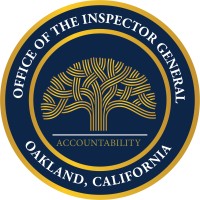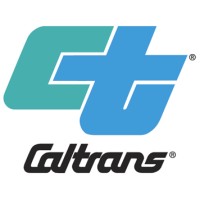
City of Oakland, Office of the Inspector General Company Cyber Security Posture
oaklandca.govThe OIG is the monitoring and auditing arm of the Oakland Police Commission. The OIG is responsible for monitoring the Oakland Police Department’s (OPD) compliance with policies, procedures, and laws intended to further strengthen the City’s ability to decrease instances of police misconduct. This oversight also includes but is not limited to auditing and reviewing the Community Police Review Agency’s (CPRA) complaint and investigative process, compliance with the City Charter and Municipal Code. The OIG provides reports and recommendations to the Police Commission as the action holder for implementation. In 2016, residents of the City of Oakland voted to approve Measure LL. This measure established the Oakland Police Commission, which is charged with overseeing the OPD policies and procedures as they relate to constitutional policing, procedural justice, equity, and accountability. Measure LL also established the CPRA, which is tasked with investigating complaints of police misconduct. In 2020, Measure S1 was passed to amend Measure LL and strengthen Oakland’s police reform efforts. Measure S1 established an independent OIG that reports directly to the Oakland Police Commission. Measure S1 and the Enabling ordinance govern the OIG’s jurisdiction and authority.
COOIG Company Details
oaklandoig
3 employees
531
922
Government Administration
oaklandca.gov
Scan still pending
CIT_2695056
In-progress
Between 900 and 1000
This score is AI-generated and less favored by cyber insurers, who prefer the TPRM score.
 COOIG Global Score
COOIG Global Score.png)

City of Oakland, Office of the Inspector General Company Scoring based on AI Models
| Model Name | Date | Description | Current Score Difference | Score |
|---|---|---|---|---|
| AVERAGE-Industry | 03-12-2025 | This score represents the average cybersecurity rating of companies already scanned within the same industry. It provides a benchmark to compare an individual company's security posture against its industry peers. | N/A | Between 900 and 1000 |
City of Oakland, Office of the Inspector General Company Cyber Security News & History
| Entity | Type | Severity | Impact | Seen | Url ID | Details | View |
|---|---|---|---|---|---|---|---|
| City of Oakland, Office of the Inspector General | Ransomware | 75 | 2 | 02/2023 | CIT4483723 | Link | |
Rankiteo Explanation : Attack limited on finance or reputationDescription: The City of Oakland declared that they had been the subject of a ransomware attack and that they were actively working to secure and safely restore services. With the aid of cybersecurity experts, the city claimed to have continued its thorough investigation into the ransomware outbreak. The personal information of a small subset of residents and a few specific current and past employees has so far been found to be implicated after a thorough manual analysis of the data that was identified to be included. Current and former employees whose personal information was impacted by the ransomware incident have received letters of notification from the City of Oakland. | |||||||
City of Oakland, Office of the Inspector General Company Subsidiaries

The OIG is the monitoring and auditing arm of the Oakland Police Commission. The OIG is responsible for monitoring the Oakland Police Department’s (OPD) compliance with policies, procedures, and laws intended to further strengthen the City’s ability to decrease instances of police misconduct. This oversight also includes but is not limited to auditing and reviewing the Community Police Review Agency’s (CPRA) complaint and investigative process, compliance with the City Charter and Municipal Code. The OIG provides reports and recommendations to the Police Commission as the action holder for implementation. In 2016, residents of the City of Oakland voted to approve Measure LL. This measure established the Oakland Police Commission, which is charged with overseeing the OPD policies and procedures as they relate to constitutional policing, procedural justice, equity, and accountability. Measure LL also established the CPRA, which is tasked with investigating complaints of police misconduct. In 2020, Measure S1 was passed to amend Measure LL and strengthen Oakland’s police reform efforts. Measure S1 established an independent OIG that reports directly to the Oakland Police Commission. Measure S1 and the Enabling ordinance govern the OIG’s jurisdiction and authority.
Access Data Using Our API

Get company history
.png)
COOIG Cyber Security News
‘Critical’ cyber vulnerabilities found in many water utilities, warns EPA inspector general
Last week's memo follows repeated warnings from federal agencies about the nation's critical infrastructure, including the water and wastewater ...
Baltimore Schools Hire Cybersecurity Firm to Investigate Attack
After Baltimore City Public Schools discovered that a ransomware attack in February had compromised data, it hired Austin-based CrowdStrike Inc.
Senate Democrats ask Social Security inspector general to investigate agency cuts
Congressional Democrats and advocacy groups have repeatedly sounded the alarm that changes made by the Social Security Administration could ...
Oyster Bay's inspector general job unfilled as town lawyers handle watchdog duties
A year and a half after Oyster Bay's inspector general resigned during an ethics probe, the town has yet to hire a successor. Instead, Oyster ...
City investigators confirm former Adams aide accosted shelter guards
NEW YORK — One of New York City Mayor Eric Adams' closest aides accosted security guards at a city-run migrant facility after being asked to ...
Experts at Racine town hall warn of Social Security crisis
RACINE, WI — The Social Security Administration (SSA) is under pressure as demand soars, staffing shrinks, and Racine County feels the ...
Chicago Inspector General asks Illinois state regulators to ban some CPD officers from law enforcement
Chicago's Inspector General is asking state regulators to ban a number of Chicago police officers from serving in law enforcement.
Election Security Partners Host 7th Annual Tabletop the Vote Exercise for 2024
Tabletop the Vote brings together federal, state, and local officials as well as private sector partners from across the election community to ...
Age-old problems to sharing cyber threat info remain, IG report finds
Both Justice Department and Pentagon officials told the IG that some entities are hesitant to share cyber threat information because it could ...

COOIG Similar Companies

State of Missouri
Build the Missouri of tomorrow. Ensure a strong foundation today. Join a group of innovative team members focused on driving the State of Missouri forward. As public servants, our team members have the opportunity to produce work that is both lasting and important. This work serves to protect famil

Caltrans
From roads less traveled to highways supporting California’s demanding commute. The California Department of Transportation (Caltrans) manages more than 50,000 miles of California's highway and freeway lanes, provides inter-city rail services, permits more than 400 public-use airports and special-us

HM Prison and Probation Service
HM Prison and Probation Service (HMPPS) is an executive agency of the Ministry of Justice. It exists to ensure people serve their sentences given by courts, both in prisons and on probation in the community. Working for HMPPS is not your average job. Whether it’s: • diffusing confrontation • helpi

Social Security Administration
Social Security provides financial protection for our nation’s people, supporting more than 64 million individuals and families. With retirement, disability, and survivors benefits, Social Security is one of the most successful anti-poverty programs in our nation's history. We are there throughout

Vlaamse overheid
Bij de Vlaamse overheid geef je elke dag opnieuw het beste van jezelf, in een job die een verschil maakt in de maatschappij. Pas afgestudeerd of al een aantal jaren professionele ervaring achter de rug? Op zoek naar een job als arbeider, bediende, leidinggevende, administratief medewerker, ingenie

Sécurité sociale
Système de protection universel auquel chacun contribue à la hauteur de ses moyens, la Sécurité sociale accompagne et protège nos concitoyens dans tous les moments de leur vie. La Sécurité sociale se compose de cinq grandes branches : - les Allocations familiales, aident la population française da

Frequently Asked Questions (FAQ) on Cybersecurity Incidents
COOIG CyberSecurity History Information
Total Incidents: According to Rankiteo, COOIG has faced 1 incidents in the past.
Incident Types: The types of cybersecurity incidents that have occurred include ['Ransomware'].
Total Financial Loss: The total financial loss from these incidents is estimated to be {total_financial_loss}.
Cybersecurity Posture: The company's overall cybersecurity posture is described as The OIG is the monitoring and auditing arm of the Oakland Police Commission. The OIG is responsible for monitoring the Oakland Police Department’s (OPD) compliance with policies, procedures, and laws intended to further strengthen the City’s ability to decrease instances of police misconduct. This oversight also includes but is not limited to auditing and reviewing the Community Police Review Agency’s (CPRA) complaint and investigative process, compliance with the City Charter and Municipal Code. The OIG provides reports and recommendations to the Police Commission as the action holder for implementation. In 2016, residents of the City of Oakland voted to approve Measure LL. This measure established the Oakland Police Commission, which is charged with overseeing the OPD policies and procedures as they relate to constitutional policing, procedural justice, equity, and accountability. Measure LL also established the CPRA, which is tasked with investigating complaints of police misconduct. In 2020, Measure S1 was passed to amend Measure LL and strengthen Oakland’s police reform efforts. Measure S1 established an independent OIG that reports directly to the Oakland Police Commission. Measure S1 and the Enabling ordinance govern the OIG’s jurisdiction and authority..
Detection and Response: The company detects and responds to cybersecurity incidents through {description_of_detection_and_response_process}.
Incident Details
Incident 1: Ransomware Attack
Title: {Incident_Title}
Description: {Brief_description_of_the_incident}
Date Detected: {Detection_Date}
Date Publicly Disclosed: {Disclosure_Date}
Date Resolved: {Resolution_Date}
Type: {Type_of_Attack}
Attack Vector: {Attack_Vector}
Vulnerability Exploited: {Vulnerability}
Threat Actor: {Threat_Actor}
Motivation: {Motivation}
Incident 2: Data Breach
Title: {Incident_Title}
Description: {Brief_description_of_the_incident}
Date Detected: {Detection_Date}
Date Publicly Disclosed: {Disclosure_Date}
Date Resolved: {Resolution_Date}
Type: {Type_of_Attack}
Attack Vector: {Attack_Vector}
Vulnerability Exploited: {Vulnerability}
Threat Actor: {Threat_Actor}
Motivation: {Motivation}
Common Attack Types: As of now, the company has not encountered any reported incidents involving common cyberattacks.
Identification of Attack Vectors: The company identifies the attack vectors used in incidents through {description_of_identification_process}.
Impact of the Incidents
Incident 1: Ransomware Attack
Financial Loss: {Financial_Loss}
Data Compromised: {Data_Compromised}
Systems Affected: {Systems_Affected}
Downtime: {Downtime}
Operational Impact: {Operational_Impact}
Conversion Rate Impact: {Conversion_Rate_Impact}
Revenue Loss: {Revenue_Loss}
Customer Complaints: {Customer_Complaints}
Brand Reputation Impact: {Brand_Reputation_Impact}
Legal Liabilities: {Legal_Liabilities}
Identity Theft Risk: {Identity_Theft_Risk}
Payment Information Risk: {Payment_Information_Risk}
Incident 2: Data Breach
Financial Loss: {Financial_Loss}
Data Compromised: {Data_Compromised}
Systems Affected: {Systems_Affected}
Downtime: {Downtime}
Operational Impact: {Operational_Impact}
Conversion Rate Impact: {Conversion_Rate_Impact}
Revenue Loss: {Revenue_Loss}
Customer Complaints: {Customer_Complaints}
Brand Reputation Impact: {Brand_Reputation_Impact}
Legal Liabilities: {Legal_Liabilities}
Identity Theft Risk: {Identity_Theft_Risk}
Payment Information Risk: {Payment_Information_Risk}
Average Financial Loss: The average financial loss per incident is {average_financial_loss}.
Commonly Compromised Data Types: The types of data most commonly compromised in incidents are {list_of_commonly_compromised_data_types}.
Incident 1: Ransomware Attack
Entity Name: {Entity_Name}
Entity Type: {Entity_Type}
Industry: {Industry}
Location: {Location}
Size: {Size}
Customers Affected: {Customers_Affected}
Incident 2: Data Breach
Entity Name: {Entity_Name}
Entity Type: {Entity_Type}
Industry: {Industry}
Location: {Location}
Size: {Size}
Customers Affected: {Customers_Affected}
Response to the Incidents
Incident 1: Ransomware Attack
Incident Response Plan Activated: {Yes/No}
Third Party Assistance: {Yes/No}
Law Enforcement Notified: {Yes/No}
Containment Measures: {Containment_Measures}
Remediation Measures: {Remediation_Measures}
Recovery Measures: {Recovery_Measures}
Communication Strategy: {Communication_Strategy}
Adaptive Behavioral WAF: {Adaptive_Behavioral_WAF}
On-Demand Scrubbing Services: {On_Demand_Scrubbing_Services}
Network Segmentation: {Network_Segmentation}
Enhanced Monitoring: {Enhanced_Monitoring}
Incident 2: Data Breach
Incident Response Plan Activated: {Yes/No}
Third Party Assistance: {Yes/No}
Law Enforcement Notified: {Yes/No}
Containment Measures: {Containment_Measures}
Remediation Measures: {Remediation_Measures}
Recovery Measures: {Recovery_Measures}
Communication Strategy: {Communication_Strategy}
Adaptive Behavioral WAF: {Adaptive_Behavioral_WAF}
On-Demand Scrubbing Services: {On_Demand_Scrubbing_Services}
Network Segmentation: {Network_Segmentation}
Enhanced Monitoring: {Enhanced_Monitoring}
Incident Response Plan: The company's incident response plan is described as {description_of_incident_response_plan}.
Third-Party Assistance: The company involves third-party assistance in incident response through {description_of_third_party_involvement}.
Data Breach Information
Incident 2: Data Breach
Type of Data Compromised: {Type_of_Data}
Number of Records Exposed: {Number_of_Records}
Sensitivity of Data: {Sensitivity_of_Data}
Data Exfiltration: {Yes/No}
Data Encryption: {Yes/No}
File Types Exposed: {File_Types}
Personally Identifiable Information: {Yes/No}
Prevention of Data Exfiltration: The company takes the following measures to prevent data exfiltration: {description_of_prevention_measures}.
Handling of PII Incidents: The company handles incidents involving personally identifiable information (PII) through {description_of_handling_process}.
Ransomware Information
Incident 1: Ransomware Attack
Ransom Demanded: {Ransom_Amount}
Ransom Paid: {Ransom_Paid}
Ransomware Strain: {Ransomware_Strain}
Data Encryption: {Yes/No}
Data Exfiltration: {Yes/No}
Ransom Payment Policy: The company's policy on paying ransoms in ransomware incidents is described as {description_of_ransom_payment_policy}.
Data Recovery from Ransomware: The company recovers data encrypted by ransomware through {description_of_data_recovery_process}.
Regulatory Compliance
Incident 1: Ransomware Attack
Regulations Violated: {Regulations_Violated}
Fines Imposed: {Fines_Imposed}
Legal Actions: {Legal_Actions}
Regulatory Notifications: {Regulatory_Notifications}
Incident 2: Data Breach
Regulations Violated: {Regulations_Violated}
Fines Imposed: {Fines_Imposed}
Legal Actions: {Legal_Actions}
Regulatory Notifications: {Regulatory_Notifications}
Regulatory Frameworks: The company complies with the following regulatory frameworks regarding cybersecurity: {list_of_regulatory_frameworks}.
Ensuring Regulatory Compliance: The company ensures compliance with regulatory requirements through {description_of_compliance_measures}.
Lessons Learned and Recommendations
Incident 1: Ransomware Attack
Lessons Learned: {Lessons_Learned}
Incident 2: Data Breach
Lessons Learned: {Lessons_Learned}
Incident 1: Ransomware Attack
Recommendations: {Recommendations}
Incident 2: Data Breach
Recommendations: {Recommendations}
Key Lessons Learned: The key lessons learned from past incidents are {list_of_key_lessons_learned}.
Implemented Recommendations: The company has implemented the following recommendations to improve cybersecurity: {list_of_implemented_recommendations}.
References
Additional Resources: Stakeholders can find additional resources on cybersecurity best practices at {list_of_additional_resources}.
Investigation Status
Incident 1: Ransomware Attack
Investigation Status: {Investigation_Status}
Incident 2: Data Breach
Investigation Status: {Investigation_Status}
Communication of Investigation Status: The company communicates the status of incident investigations to stakeholders through {description_of_communication_process}.
Stakeholder and Customer Advisories
Incident 1: Ransomware Attack
Stakeholder Advisories: {Stakeholder_Advisories}
Customer Advisories: {Customer_Advisories}
Incident 2: Data Breach
Stakeholder Advisories: {Stakeholder_Advisories}
Customer Advisories: {Customer_Advisories}
Advisories Provided: The company provides the following advisories to stakeholders and customers following an incident: {description_of_advisories_provided}.
Initial Access Broker
Incident 1: Ransomware Attack
Entry Point: {Entry_Point}
Reconnaissance Period: {Reconnaissance_Period}
Backdoors Established: {Backdoors_Established}
High Value Targets: {High_Value_Targets}
Data Sold on Dark Web: {Yes/No}
Incident 2: Data Breach
Entry Point: {Entry_Point}
Reconnaissance Period: {Reconnaissance_Period}
Backdoors Established: {Backdoors_Established}
High Value Targets: {High_Value_Targets}
Data Sold on Dark Web: {Yes/No}
Monitoring and Mitigation of Initial Access Brokers: The company monitors and mitigates the activities of initial access brokers through {description_of_monitoring_and_mitigation_measures}.
Post-Incident Analysis
Incident 1: Ransomware Attack
Root Causes: {Root_Causes}
Corrective Actions: {Corrective_Actions}
Incident 2: Data Breach
Root Causes: {Root_Causes}
Corrective Actions: {Corrective_Actions}
Post-Incident Analysis Process: The company's process for conducting post-incident analysis is described as {description_of_post_incident_analysis_process}.
Corrective Actions Taken: The company has taken the following corrective actions based on post-incident analysis: {list_of_corrective_actions_taken}.
Additional Questions
General Information
Ransom Payment History: The company has {paid/not_paid} ransoms in the past.
Last Ransom Demanded: The amount of the last ransom demanded was {last_ransom_amount}.
Last Attacking Group: The attacking group in the last incident was {last_attacking_group}.
Incident Details
Most Recent Incident Detected: The most recent incident detected was on {most_recent_incident_detected_date}.
Most Recent Incident Publicly Disclosed: The most recent incident publicly disclosed was on {most_recent_incident_publicly_disclosed_date}.
Most Recent Incident Resolved: The most recent incident resolved was on {most_recent_incident_resolved_date}.
Impact of the Incidents
Highest Financial Loss: The highest financial loss from an incident was {highest_financial_loss}.
Most Significant Data Compromised: The most significant data compromised in an incident was {most_significant_data_compromised}.
Most Significant System Affected: The most significant system affected in an incident was {most_significant_system_affected}.
Response to the Incidents
Third-Party Assistance in Most Recent Incident: The third-party assistance involved in the most recent incident was {third_party_assistance_in_most_recent_incident}.
Containment Measures in Most Recent Incident: The containment measures taken in the most recent incident were {containment_measures_in_most_recent_incident}.
Data Breach Information
Most Sensitive Data Compromised: The most sensitive data compromised in a breach was {most_sensitive_data_compromised}.
Number of Records Exposed: The number of records exposed in the most significant breach was {number_of_records_exposed}.
Ransomware Information
Highest Ransom Demanded: The highest ransom demanded in a ransomware incident was {highest_ransom_demanded}.
Highest Ransom Paid: The highest ransom paid in a ransomware incident was {highest_ransom_paid}.
Regulatory Compliance
Highest Fine Imposed: The highest fine imposed for a regulatory violation was {highest_fine_imposed}.
Most Significant Legal Action: The most significant legal action taken for a regulatory violation was {most_significant_legal_action}.
Lessons Learned and Recommendations
Most Significant Lesson Learned: The most significant lesson learned from past incidents was {most_significant_lesson_learned}.
Most Significant Recommendation Implemented: The most significant recommendation implemented to improve cybersecurity was {most_significant_recommendation_implemented}.
References
Most Recent Source: The most recent source of information about an incident is {most_recent_source}.
Most Recent URL for Additional Resources: The most recent URL for additional resources on cybersecurity best practices is {most_recent_url}.
Investigation Status
Current Status of Most Recent Investigation: The current status of the most recent investigation is {current_status_of_most_recent_investigation}.
Stakeholder and Customer Advisories
Most Recent Stakeholder Advisory: The most recent stakeholder advisory issued was {most_recent_stakeholder_advisory}.
Most Recent Customer Advisory: The most recent customer advisory issued was {most_recent_customer_advisory}.
Initial Access Broker
Most Recent Entry Point: The most recent entry point used by an initial access broker was {most_recent_entry_point}.
Most Recent Reconnaissance Period: The most recent reconnaissance period for an incident was {most_recent_reconnaissance_period}.
Post-Incident Analysis
Most Significant Root Cause: The most significant root cause identified in post-incident analysis was {most_significant_root_cause}.
Most Significant Corrective Action: The most significant corrective action taken based on post-incident analysis was {most_significant_corrective_action}.
What Do We Measure?
















Every week, Rankiteo analyzes billions of signals to give organizations a sharper, faster view of emerging risks. With deeper, more actionable intelligence at their fingertips, security teams can outpace threat actors, respond instantly to Zero-Day attacks, and dramatically shrink their risk exposure window.
These are some of the factors we use to calculate the overall score:
Identify exposed access points, detect misconfigured SSL certificates, and uncover vulnerabilities across the network infrastructure.
Gain visibility into the software components used within an organization to detect vulnerabilities, manage risk, and ensure supply chain security.
Monitor and manage all IT assets and their configurations to ensure accurate, real-time visibility across the company's technology environment.
Leverage real-time insights on active threats, malware campaigns, and emerging vulnerabilities to proactively defend against evolving cyberattacks.




